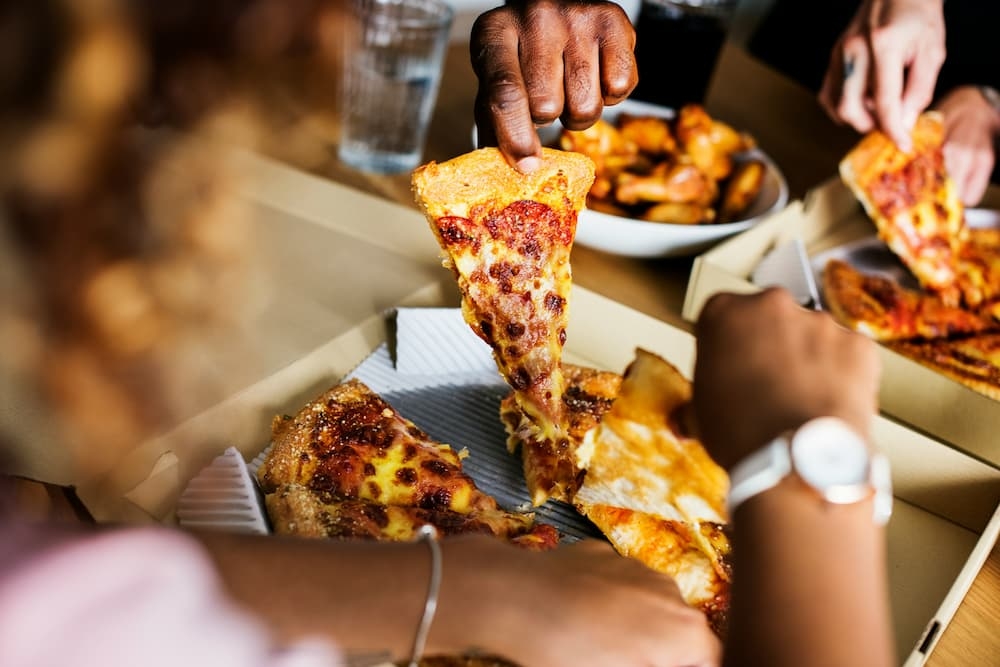The key to faster deliveries: How route optimization can cut costs
Table of Contents
CloudKitchens
How many tacos can be delivered from a 1000sqft restaurant?
The same amount as a 200sqft ghost kitchen.
The success of a food delivery business depends on speed, efficiency, and cost-effectiveness. One of the most effective ways to achieve these goals is through route optimization, a process that ensures delivery drivers take the fastest and most efficient routes.
By leveraging technology and smart planning, restaurants and food delivery services can significantly reduce costs, enhance customer satisfaction, and maximize profits.
In this article, we’ll explore the importance of food delivery route optimization, its benefits, and the best strategies for implementing it.
What is route optimization?
Route optimization is the process of determining the most efficient delivery routes using real-time data and advanced algorithms. It considers multiple factors, including:
- Traffic conditions
- Delivery time windows
- Driver availability
- Road restrictions
- Weather conditions
Instead of relying on manual route planning, modern businesses use AI-powered software to automatically generate the best delivery paths, reducing delays and improving overall efficiency.
Why is it good to do route optimization for delivery?
1. Faster delivery times
Customers expect their food to be hot and fresh. Optimized routes ensure that deliveries reach customers as quickly as possible, enhancing customer satisfaction and loyalty.
2. Reduced fuel costs
By minimizing unnecessary mileage, route optimization helps reduce fuel consumption, lowering operational costs for food delivery businesses.
3. Increased order capacity
Efficient routing allows delivery drivers to complete more orders per shift, increasing revenue without adding additional resources.
4. Enhanced driver productivity
Drivers follow structured routes instead of wasting time figuring out directions or dealing with unnecessary detours. This improves efficiency and reduces stress.
5. Better resource allocation
Optimizing routes ensures that available drivers are being used effectively, helping businesses manage labor costs and avoid overstaffing.
6. Lower carbon footprint
By reducing travel distances and fuel consumption, route optimization contributes to environmental sustainability, making businesses more eco-friendly.
7. Fewer missed or late deliveries
With accurate ETAs (Estimated Time of Arrival) and improved planning, businesses can prevent delays and missed deliveries, maintaining a strong reputation.
Read more: How food delivery services can expand your customer base in 2025
Benefits of route optimization for your food delivery app
1. Enhanced delivery speed
By determining the fastest routes, route optimization ensures food reaches customers quickly, maintaining quality and improving customer satisfaction. For example, a study by Routific found that optimized delivery routes can reduce delivery times by up to 35%.
2. Significant cost savings
Reducing unnecessary mileage leads to lower fuel expenses, reduced vehicle wear and tear, and decreased labor costs, improving overall profitability. A report by the U.S. Department of Energy states that optimized logistics can cut fuel usage by 15-20%, leading to substantial savings.
3. Higher order fulfillment rate
Optimized routes allow delivery drivers to handle more orders in less time, increasing efficiency and maximizing revenue potential. For instance, businesses that use AI-powered route planners report an increase in deliveries per driver by up to 40%.
4. Improved driver experience
Structured and optimized routes reduce stress for drivers, making their jobs more manageable and increasing retention rates. With fewer last-minute route changes, drivers experience more predictable and balanced workloads.
5. Real-time order tracking
Many route optimization tools integrate with tracking software, allowing customers to follow their orders in real time, enhancing transparency and trust. According to a survey, 70% of consumers prefer businesses that offer real-time delivery tracking.
6. Reduction in failed deliveries
Accurate and well-planned routes decrease the chances of missed or delayed deliveries, reducing customer complaints and improving business reputation. Studies show that failed deliveries can cost businesses up to $17 per order, making efficient routing crucial.
7. Environmentally friendly operations
Minimizing excess fuel consumption and reducing vehicle emissions contribute to a more sustainable and eco-conscious food delivery service. Companies that adopt route optimization report a reduction in carbon emissions by up to 30%.
8. Competitive advantage
Businesses that leverage route optimization can offer faster and more reliable deliveries, standing out in the competitive food delivery market. Major brands like Domino’s use advanced routing algorithms to maintain a competitive edge and ensure customer satisfaction.
Read more: Boost profitability by managing your restaurant labor cost effectively
7 tips for optimizing your food delivery route
Utilize AI-powered route planners
Automate delivery routes using AI-driven software to maximize efficiency by reducing unnecessary detours and traffic-related delays. For example, platforms like Routific and OptimoRoute analyze real-time traffic data to find the fastest routes.
Optimize delivery zones
Assign drivers to specific areas to prevent route overlap, ensuring a more organized and efficient delivery process. By dividing the city into zones, businesses can reduce confusion and streamline dispatching.
Leverage historical data
Use past delivery trends, including peak order times and common delays, to create more efficient future routes. For instance, analyzing order volumes can help restaurants anticipate busy periods and adjust driver schedules accordingly.
Use real-time GPS tracking
Monitor deliveries and make necessary route adjustments to avoid roadblocks, construction zones, and unexpected delays. A delivery service using GPS tracking can reroute a driver in real-time if an accident causes a road closure.
Minimize idle time
Reduce waiting times between deliveries by scheduling orders efficiently and ensuring that drivers take the most direct paths. For example, batch processing orders within a certain radius can cut down on back-and-forth travel time.
Encourage driver feedback
Listen to driver input to improve routing decisions and address real-world challenges they encounter on their routes. A driver might suggest an alternate path that is consistently faster due to less congestion, improving overall efficiency.
Continuously analyze performance
Regularly review route data, including delivery times and fuel consumption, to identify areas for improvement and refine your delivery strategies. Businesses that consistently monitor key performance indicators (KPIs) can optimize their processes and stay ahead of inefficiencies.
Read more: How restaurant analytics can transform your operations
Maximize your food delivery efficiency with CloudKitchens
Food delivery route optimization is essential for reducing costs, improving efficiency, and delivering the best possible experience to customers. However, challenges such as traffic unpredictability, driver shortages, and software implementation costs can arise.
To overcome these obstacles, businesses should invest in AI-driven tools, continuously analyze performance metrics, and adapt to real-time conditions. With the right strategies and tools, restaurants can ensure faster deliveries, lower expenses, and higher customer satisfaction.
Route optimization is essential for reducing costs, improving efficiency, and delivering the best possible experience to customers. With the right strategies and tools, restaurants can ensure faster deliveries, lower expenses, and higher customer satisfaction.
At CloudKitchens, we provide solutions that empower food businesses with advanced delivery logistics and route optimization tools. Whether you’re a ghost kitchen, food truck, or restaurant, our technology helps you maximize efficiency and profitability.
DISCLAIMER: This information is provided for general informational purposes only and the content does not constitute an endorsement. CloudKitchens does not warrant the accuracy or completeness of any information, text, images/graphics, links, or other content contained within the blog content. We recommend that you consult with financial, legal, and business professionals for advice specific to your situation.
More insights & stories
There’s more where that came from.
Get in the know and check out our additional insights


